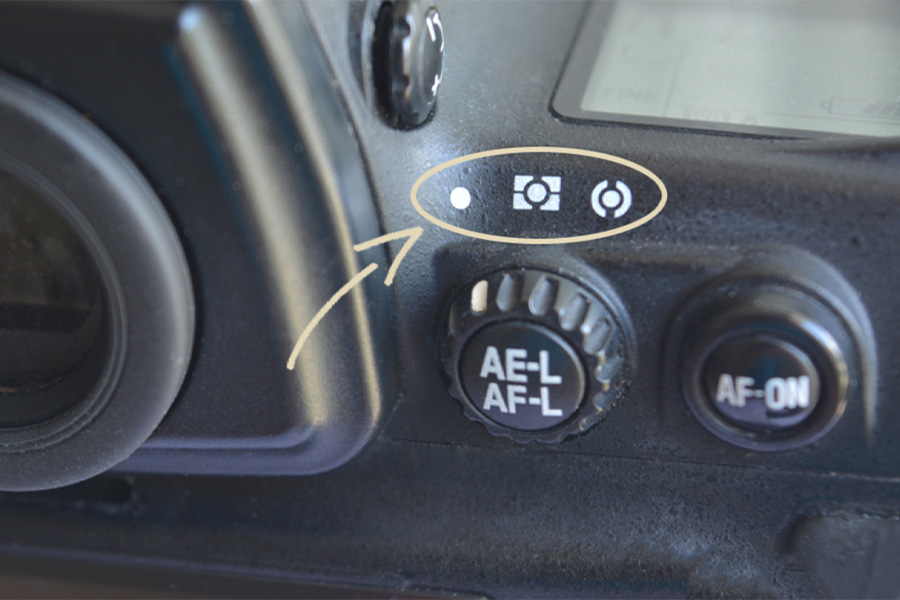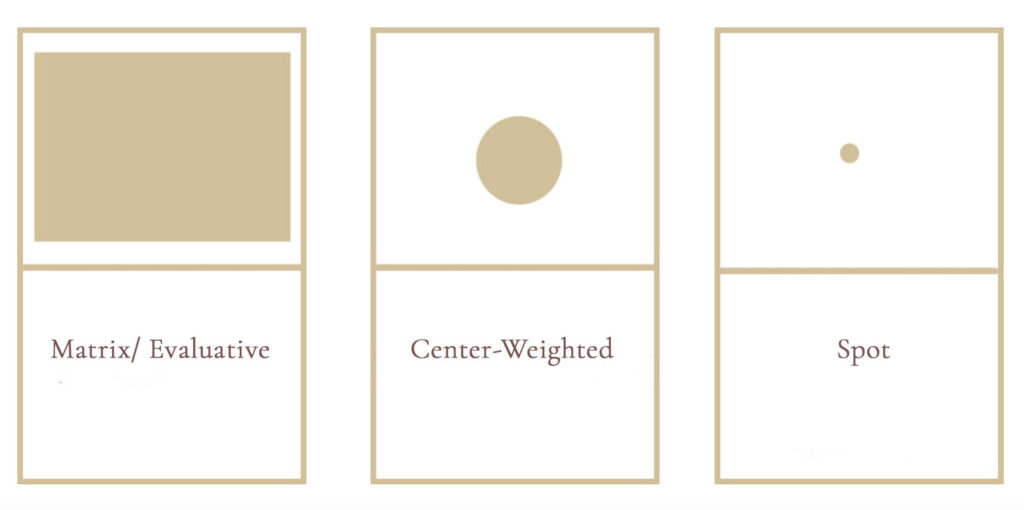Metering in photography is an important function in cameras that measures the amount of light entering the camera, helping to determine the correct settings for a well-exposed photograph. It’s all about finding the right balance between aperture, shutter speed, and ISO sensitivity.
In most professional cameras, there’s a built-in exposure meter that looks like a small sensor. While external exposure meters are available, I’ll focus on the built-in sensor for simplicity in this article.


Metering in photography helps the camera assess the available light in a scene and determine the optimal way to capture it. It’s important because excessive light can lead to overexposure (overly bright image), whereas insufficient light can cause underexposure (too dark image).
Light entering the camera can be categorized into reflected and incident.
The camera’s built-in metering modes primarily focus on measuring reflected light, which bounces off the subjects or surfaces within the scene.
Metering in photogrpahy help ensure proper exposure in various lighting situations. Cameras have several metering modes to accommodate different lightening scenarios:

Matrix (or in other words Evaluative) metering mode is based on a simple principle – it divides the frame into numerous zones, each analyzed separately for brightness and darkness. Additionally, it considers factors like the focus point, colors, and the distance between the camera and the subject. Originally introduced by Nikon in 1983 with the Nikon FA camera, modern Nikon cameras feature metering sensors with nearly a thousand zones. Matrix metering mode is typically the default mode in most cameras and is well-suited for evenly lit conditions.
When I took the following photos, I switched between three metering modes, but the aperture, shutter speed, and ISO remained the same.



Center-weighted metering is useful when you want to measure the lighting of only a central part of the frame. In this mode, the camera gives more importance to the light at the center of the frame while considering the overall scene. For example, when taking a portrait with the sun in the background or outdoor photography with contrasting lighting. In this mode, only the central part of the frame is measured. Unlike matrix metering, the focus point doesn’t influence the final result because the metering is solely focused on the central portion of the frame.

Spot metering focuses on a tiny area at the center of the frame to calculate exposure. It usually measures about 1-5% of the total frame area. This mode works well when the main subject is bright, and the background is dark, like capturing the moon against the night sky.

By mastering these metering modes and knowing when to use each one, photographers can enhance their creativity and consistently capture well-exposed photographs across various scenarios.
*All pictures posted in this article were taken by ArsVie Photo Studio. You cannot copy or share these images without permission from ArsVie Photo Studio.
Stay inspired,
Elena Sullivan
Hi, there! I'm Elena Sullivan! The founder of the ArsVie photo studio, trilingual photographer, online educator, woman in business cheerleader. Capturing life's moments with authenticity and elegance to inspire others. Passionate about helping businesses convey their message through compelling imagery.
Copyright © 2024 ArsVie photo studio. All Rights Reserved.
We use cookies to improve your browsing experience, personalize content, provide social media features, and analyze our traffic. By clicking “Accept All Cookies,” you consent to our use of cookies. You can manage your preferences or find out more by visiting our Cookie Policy.